Saint John tells that we know that we love the children of God, when we love God and obey His commandments. And John goes on to say, “This is the love of God: that we keep His commandments.” Keeping our Lord’s commandments is how we love God. And fittingly, what it means to keep Our Lord’s commandments is a rich subject. Jesus Christ in many places speaks to this. He says “If you keep my commandments, you will abide in my love”; “Abide in Me, and I in you…he who abides in Me and I in him, he bears much fruit, for apart from Me you can do nothing”; “If you continue in my word, you are truly my disciples,” and there are many more such instances. Such as the Psalmist who says “The Words of the Lord are pure words.” And who can say it better than Saint Peter says to Jesus: “You have the words of life.” To keep Our Lord’s commandments is to treasure Our Lord’s words, all of the wonderful, challenging, provocative, loving, mysterious, and holy words of Jesus as recorded by the New Testament writers.
Yet we are not merely to be aware of our Lord’s holy words, or to merely recite them mechanically, but we are, in the words of Anglican liturgy, to read, mark, learn, and inwardly digest them. We are to read deeply in them, and pray. We are to ruminate upon them, and pray. We are to savor them, and pray. We are to allow the holy words of Christ to prayerfully purify our minds and illumine our hearts. We are to live with them, and make them our daily bread: our Lord’s words like the furniture and appliances of our home, indeed like our home itself, indeed even like a very breathing, the beating of our heart. What else could it mean to “abide” in Our Lord’s words, to keep His words, than this?
This deep and prayerful engagement with Scripture is an example of approach to devotion that is called “mystagogy.” Mystagogy is part of the Christian vocabulary, and it means “being led into the mystery of Christ.” To abide in Our Lord’s words, to ruminate, inwardly digest, and live with His words so as to be transformed is to treat His words mystagogically, that is, to treat His words as invitations to be led by the Holy Spirit deeper into the mystery of Christ. Mystagogy is something the Church does as a deep form of prayer. But it is not only done by persons on their own, but also by groups of Christians and even whole congregations. In small groups of Christians, mystagogy is done as a form of Christian formation (in fact, our Catechesis of the Good Shepherd program is based upon mystagogy as an approach to childhood catechesis). For whole congregations, mystagogy happens through preaching, particularly preaching over a liturgical season. It is an ancient practice of the Church for the preaching in the Easter season to be mystagogical, looking back at the events of Holy Week so as to be drawn by the Holy Spirit more deeply into the mystery of Our Lord’s Passover.
So I will be doing this over the coming Sundays, perhaps all the way to Trinity Sunday. And the particular point of departure for this Eastertide’s mystagogy is reflecting upon our Our Lord Jesus Christ as the Bridegroom. The Bridegroom was the dominant image during this past Holy Week’s liturgy on Monday, Tuesday, and Wednesday, and I want to expand upon those experiences Sunday by Sunday that all of us may partake.
To begin, we remember Saint Thomas, one of the twelve (although at this point in the narrative, in fact one of the eleven). Let us consider what held him back from believing the account of the Resurrection from the other Ten, as well as the Holy Myrrh-bearing Women. One reason he held back, perhaps the primary one, is based on what he said: “Unless I see in His hands the print of the nails, and place my finger in the mark of the nails, and place my hand in His side, I will not believe.” Thomas wanted to perceive himself the wounds of Jesus; even, to put it a different way, Christ’s woundedness. “We have seen the Lord,” he was told. But had they seen His woundedness? Without the wounds, how could they be sure it was really Him, and not a fallen, unholy angel pretending to be Him, Thomas may have wondered. And if it is not in fact Christ, then Thomas would be quite right to wait for the real thing, to wait for He Who named Himself “the Bridegroom.” Jesus clearly taught “Truly, I say to you, watch therefore, for you know neither the day nor the hour, and He was referring to the coming of the Bridegroom.
He did this by means of the Parable of the Ten Virgins, five who were wise with their oil (that is in doing works of mercy) and five who were foolish (doing no works of mercy). Jesus said that at midnight there would be a cry, “Behold, the Bridegroom! Come out to meet Him.” And this was the message Thomas heard from the Ten and the Holy Women: “We have seen the Lord.” Yes, it seems Thomas thought to himself, but is it He who was wounded for our transgressions, He Who was bruised for our iniquities; upon Whom was the chastisement that made us whole, for with His stripes we are healed? These are wounds, bruises, chastisements, and stripes that are the marks of the true Bridegroom. The true Bridegroom, if He has come, has no form or comeliness that we should look at Him, no beauty that we should desire Him.
Hence Thomas was doing was Jesus told His disciples to do: keep His commandments, abide in His words, treat what He has said as treasure. And thus our Lord Jesus, eight days later, when His disciples were again in the Upper Room, this time Thomas with them, with the doors shut, came and stood among them. In sharing again His heavenly peace, what did He say to Thomas but “put your finger here, and see My hands; put out your hand, and place it is My side; do not be faithless, but believing”—that you would know Me.
Our Lord said to the foolish virgins, “Truly, I do not know you.” Yet let Him know us by our knowing of Him. Christ the Bridegroom is His glory is wounded; Christ the Bridegroom in His glory has nail holes in His hands; Christ the Bridegroom in His glory has a tear in His side. All of this, for us, and for our salvation: His sacrifice entirely that we might be redeemed, and be gathered by Christ our Bridegroom into the Marriage Feast: the Bride which is the Church, forever entwined with the Bridegroom, Jesus Christ; Who lives and reigns with the Father in the unity of the Holy Ghost, ever one God unto the ages of ages. Amen.



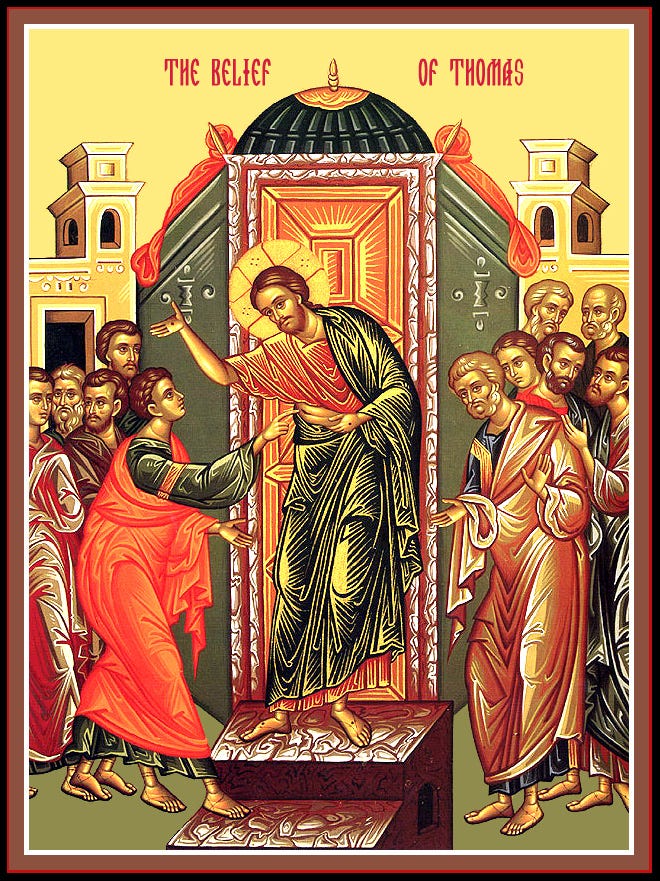


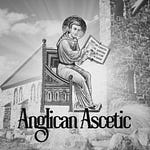
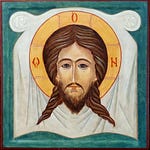
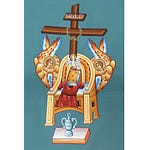

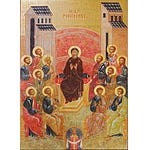
Share this post